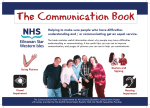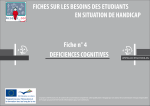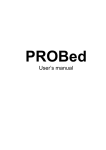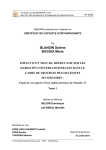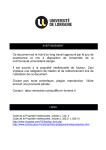Download PATIENT PASSPORTS: A USER GUIDE FOR CARERS AND STAFF
Transcript
PATIENT PASSPORTS: A USER GUIDE FOR CARERS AND STAFF SUPPORTING PEOPLE WITH LEARNING DISABILITIES IN EAST CHESHIRE. What is the need for a patient passport? A patient passport provides immediate and important information for doctors, nurses and administrative staff in an easy to read form, promoting a positive experience for people with learning disabilities going into hospital. How is information gathered? Information recorded on the passport must be collected in consultation with the service user, their family and any other carers and professionals involved in caring and supporting them, whether this is at home, at day services, at work, at college or at hospital. Consent If the patient has a passport completed prior to admission, staff can be assured that the patient’s consent will have been obtained or it will have been deemed in the patient’s best interest. When and how should the patient passport be used? The patient passport should be taken with the service user when -: • they are admitted to hospital for any planned or unplanned assessment and treatment • attending outpatients appointments • any other health appointments. The Patient Journey Team will be informed of the service user’s admission to a ward via the email alert system but not contacted when attending for routine outpatient appointments. The patient passport should move around the hospital with the service user and any necessary updates should be written on the passport by hospital staff. How should the patient passport be completed? The front page contains important information for doctors and nurses who will be required to assess and treat the patient. The reverse contains personal information which staff need when booking in or arranging discharge. The front page has a traffic light sequence as illustrated below. At the top there is space to enter the service users name and a recent photograph. The remainder is split into 4 sections and information within each section needs to be entered. Medical Information, Risks & Communication Support Environment Medical Information o What present medical conditions exist, known allergies, fears and phobias and how is medication taken? Include a copy of the medication record sheet or repeat prescription form. o A full medical history can be provided later. Possible Risks • • • • • • • Communication difficulties, which could affect capacity and consent Medication Pain management Dysphagia, (swallowing difficulties) which can increase risk of choking, aspiration pneumonia, dehydration and malnutrition Behaviour Personal hygiene Discharge (following treatment) Every individual is different therefore please ensure you carry out a risk assessment to identify ALL risks for each person. Communication o Level of comprehension/capacity to consent o How does the person communicate? e.g. Makaton, pictures, words, use of meaningful objects (objects of reference). o How does the person let you know they are comfortable or in pain e.g. gesture, o behaviour, pain scale? How it is best to explain procedures e.g. pictures, Makaton, words, Support. o o o o o Staffing levels e.g. who needs to stay and how often Seeing/hearing, personal care (incl. continence, washing, dressing) Sleeping (routine, lights on, music playing, night time seizures?) Keeping safe (e.g. absconding, behaviours, bedrails) In new surroundings e.g. will or won’t wait, needs time to absorb surroundings/information), hobbies and interests Management/de-escalation of challenging/self-injurious behaviours e.g. distraction techniques. Environment. o Considerations to lighting, noise, smell, crowds and space. Examples include such factors as the need for side rooms, wheelchair access or use of a hoist. Once the front sheet is complete, the reverse side, which includes mainly personal information, needs to be filled in. Ideally every box/line should have an entry made. How is quality of the patient passport maintained? Once completed, it is important that the patient passport is checked by a colleague who has experience of care planning or who has a good understanding of patient passports. The passport should be reviewed on a minimum 6 monthly basis or as circumstances change i.e. medication and any updates should be added at the review stage. The name of the person who reviewed the passport and the review date should be added to the reverse side. The passport should then be reprinted for taking to hospital again when required.



